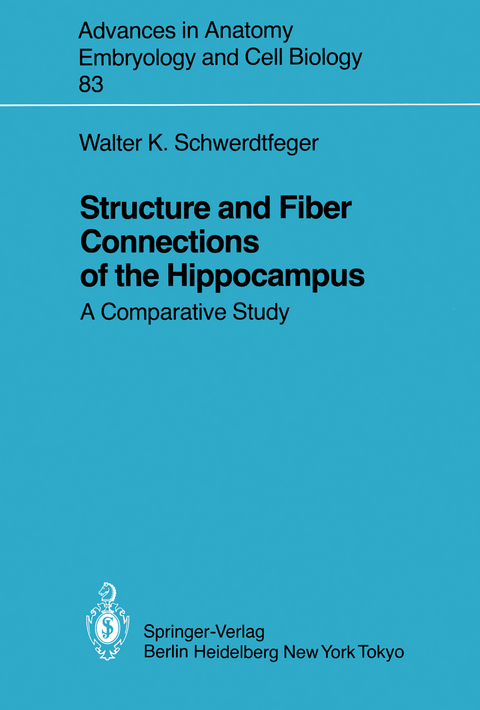
Structure and Fiber Connections of the Hippocampus
A Comparative Study
Seiten
1984
|
1984
Springer Berlin (Verlag)
978-3-540-13092-5 (ISBN)
Springer Berlin (Verlag)
978-3-540-13092-5 (ISBN)
Of all cytoarchitectonic structures in the brain of mammals, the hippocampus is perhaps the most conspicuous because of its unusual macroscopic and micro scopic appearance. During phylogeny, the hippocampus has developed from a single cortical plate in amphibia into a complicated, three-dimensional convo luted structure in mammals. Because of its clear lamination into axonal, perikaryal, and dendritic layers, the hippocampus has often been considered a simple cortex model. Indeed, this trilaminated construction resembles perhaps the least complicated type of neuronal cortex. There is a large literature describing hippocampal morphology in many species with respect to cytoarchitectonics, fiberarchitectonics, angioar chitectonics, chemoarchitectonics, synaptology, and fine structure. On the other hand, up to the present day there has been no generally accepted concept on the main functions of the hippocampus, although many studies dealing with its physiological and biochemical properties and its possible influences on behav ior have provided some valuable indications. Early investigators described the hippocampus as being a part of the "rhinen cephalon" (e. g. Zuckerkandl 1887), together with other allocortical structures, such as the olfactory bulb, olfactory tubercle, and piriform lobe. Thus, the hippocampus was assigned to the olfactory system, and it was not until improved degeneration techniques were applied that this error could be corrected. It be came clear that only part of the allocortical areas receive direct olfactory inputs, namely the retrobulbar region (anterior olfactory nucleus), precommissural hip pocampus, olfactory tubercle, prepiriform region, periamygdalar region, and part of the entorhinal region.
1 Introduction.- 2 Materials and Methods.- 2.1 Animals Studied.- 2.2 Experimental Procedures.- 3 Nomenclature.- 4 Results.- 4.1 General and Special Remarks on the Macroscopic and Microscopic Anatomy of the Hippocampus.- 4.2 Fiber Connections of the Hippocampus.- 5 Discussion.- 5.1 Size of the Hippocampus as Compared with the Telencephalon.- 5.2 Fiber Connections.- 5.3 Topical Hypotheses on the Function of the Hippocampus.- 5.4 Anatomic Contribution to Theories on Hippocampal Function.- 6 Summary.- 7 Acknowledgments.- 8 References.
| Erscheint lt. Verlag | 1.2.1984 |
|---|---|
| Reihe/Serie | Advances in Anatomy, Embryology and Cell Biology |
| Zusatzinfo | VI, 76 p. |
| Verlagsort | Berlin |
| Sprache | englisch |
| Maße | 170 x 244 mm |
| Gewicht | 185 g |
| Themenwelt | Medizin / Pharmazie ► Medizinische Fachgebiete ► Neurologie |
| Studium ► 1. Studienabschnitt (Vorklinik) ► Anatomie / Neuroanatomie | |
| Naturwissenschaften ► Biologie ► Humanbiologie | |
| Schlagworte | Hippokampus • Säugetiere • Structure |
| ISBN-10 | 3-540-13092-6 / 3540130926 |
| ISBN-13 | 978-3-540-13092-5 / 9783540130925 |
| Zustand | Neuware |
| Haben Sie eine Frage zum Produkt? |
Mehr entdecken
aus dem Bereich
aus dem Bereich
Buch | Hardcover (2022)
Urban & Fischer in Elsevier (Verlag)
CHF 307,95
Struktur und Funktion
Buch | Softcover (2021)
Urban & Fischer in Elsevier (Verlag)
CHF 61,60
+ Web + Lehrbuch
Buch | Hardcover (2022)
Urban & Fischer in Elsevier (Verlag)
CHF 348,55


